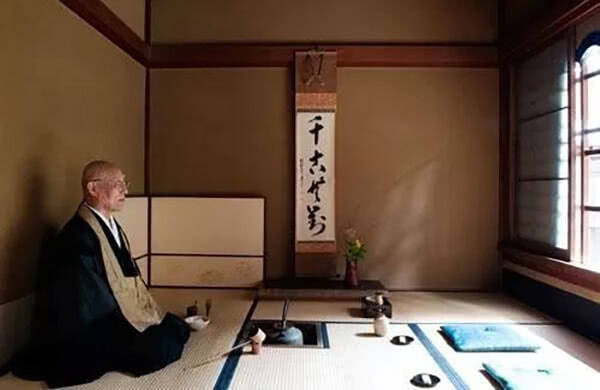
In the 16th century, the samurai and the politician seeking the unification and reform of Japan in the tea house; In the 17th century, the tea house became the only place where free thought could be breathed in Tokugawa Bakufu strictly formalistic environment. Tea houses took an important place in Japanese history.
Outside The Japanese Tea House – Roji
Japanese tea houses are usually surrounded by a small garden called “Roji”.The design of the Roji was so elaborate that there were definite rules as to where shrubs were planted, the shape of the stones and where they were to be placed, also the arrangement of the stones was to be laid.
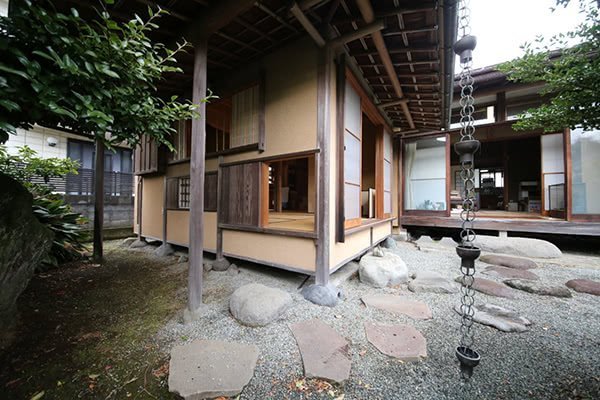
In the open ground, there is usually a handwashing pan called “Chōzubachi“, you need to clean yourself before step into the tea house. The bottom of the Chōzubachi often with a hole. When water drops, the hole amplifies the sound and drains the water. In order to make people hear the sound of water drops to the underground clearly, some Chōzubachi also with a small bamboo tube for people listening.

The Roof of The Japanese Tea House
The roof of the Japanese tea house uses triangular design, build with leaf or bamboo piece.Under the place far away from the roof(the center of the triangular) was the seat for the guest, and the closer place from the roof was the host’s seat, expressed the host’s humility and respect for the guests.
The Entrance of The Japanese Tea House
The entrance to the tea house is very different from other Japanese buildings, it is called “Nijiriguchi”. And it is not like the normal Japanese sliding door as high as the wall, but a small entrance (about 73 cm high and 70 cm width) that can only be entered with kneeling.This design comes from the sliding door of the boat cabin. Japan’s famous tea master Sen no Rikyū once go out on a boat, found the cabin sliding door is very small, people can only bend over to in and out, just similar the kneel-rite in the tea ceremony. So he uses this design on the tea house door.
Why must be in and out of the teahouse with kneeling? Because it’s an important view of the Japanese tea ceremony. That means everyone is the same, and everyone must keep humility in the tea ceremony.
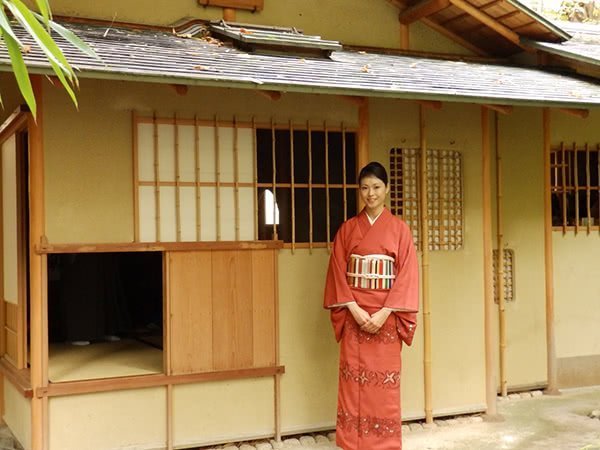
Tokonoma
Tokonoma means the niche. The Tokonoma is the soul of the Japanese tea house. The picture that hangs inside the Tokonoma, it is the most important prop of the Japanese tea ceremony. We can see the style of the tea house, and the disposition of the host from it.Tokonoma is a common design in Japanese traditional building. They are about 3m wide and 30 cm deep, with paintings, vases or censer places inside. But the Tokonoma in the tea house however greatly simplifies, width only 1.3m, height about 1.7 m, only hang an ink painting about zen.
The Windows of Tea House
The tea house interior beside Tokonoma, on the other 3 walls all has small windows.Japanese tea ceremony in pursuit of natural light, unless in the case of evening or dawn(only set oil lamp, electric lamp in not allow), there is no lighting-tool in the tea house, only rely on the window lighting.
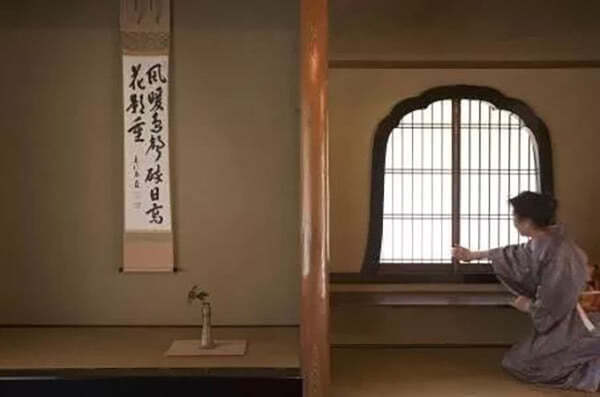
The window of the tea house is not for viewing the scenery. In the tea ceremony time, the host and guest should concentrate on it, abstain from looking outside. So the windows are not set for viewing but lighting.
Such as the host position, the light will shine in from the window which set on the wall root, for operate conveniently. And the side of the tea house interior besides Tokonoma, there is also a window, make the painting in a very artistic contrast of light and dark.
Teaware In The Japanese Tea House
The Japanese tea ceremony teaware was placed in the middle of the tea house, including iron teapot, spoon, tea bowl, tea storage container, and so on. The design of the Japanese teaware is very exquisite, and the using method is also fastidious, with very ornamental and collection value.Besides, a floor hearth was installed in the middle of the tea house, for boiling water when drinking tea in winter. The position of the floor hearth slightly deviates from the center of the tea house, and it is wrong to place it in the center, which reflects the asymmetrical aesthetics of the tea ceremony.
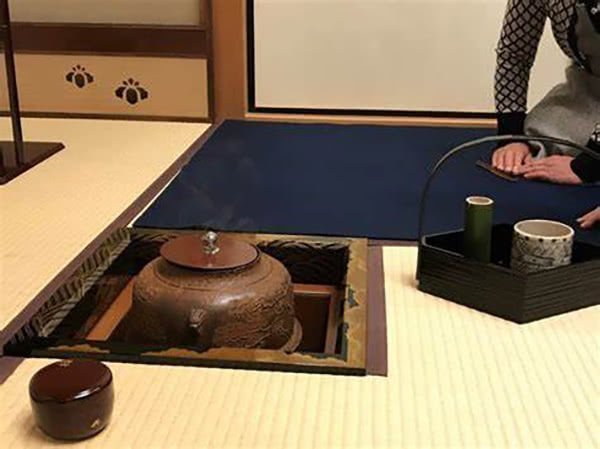
The Thought of Zen
The Japanese tea house acreage standard is four and a half pieces tatami (about 8.186 square meters), there are nothings else except the necessary. “Silent” is an important view of Zen Buddhism.All the things in the tea house, including the tea house itself, are made by the raw material from nature. Such as the stones, wooden, bamboo, grass for building tea house, and the clay, wooden for making teaware. Which can provide a kind of infinite close to the nature experience, a great help for Zen meditation.
No comments:
Post a Comment